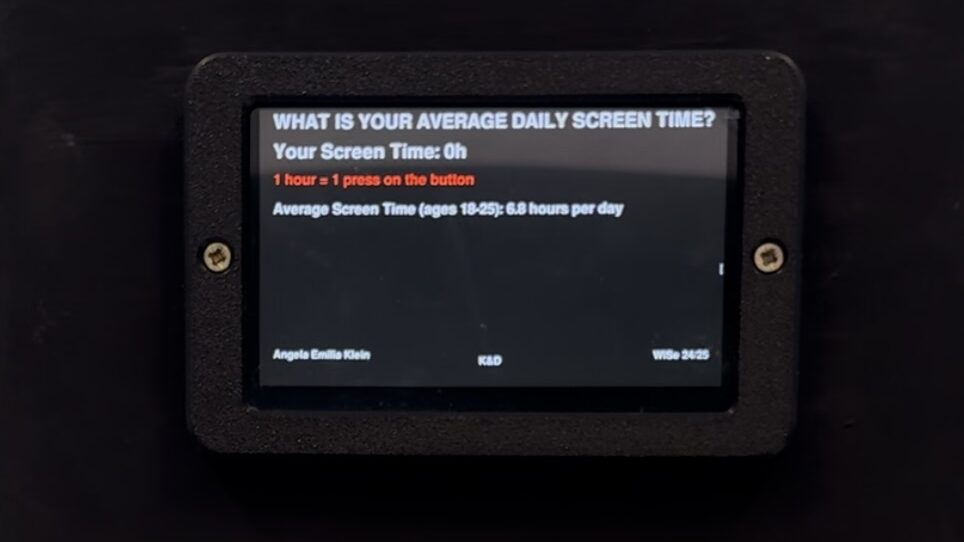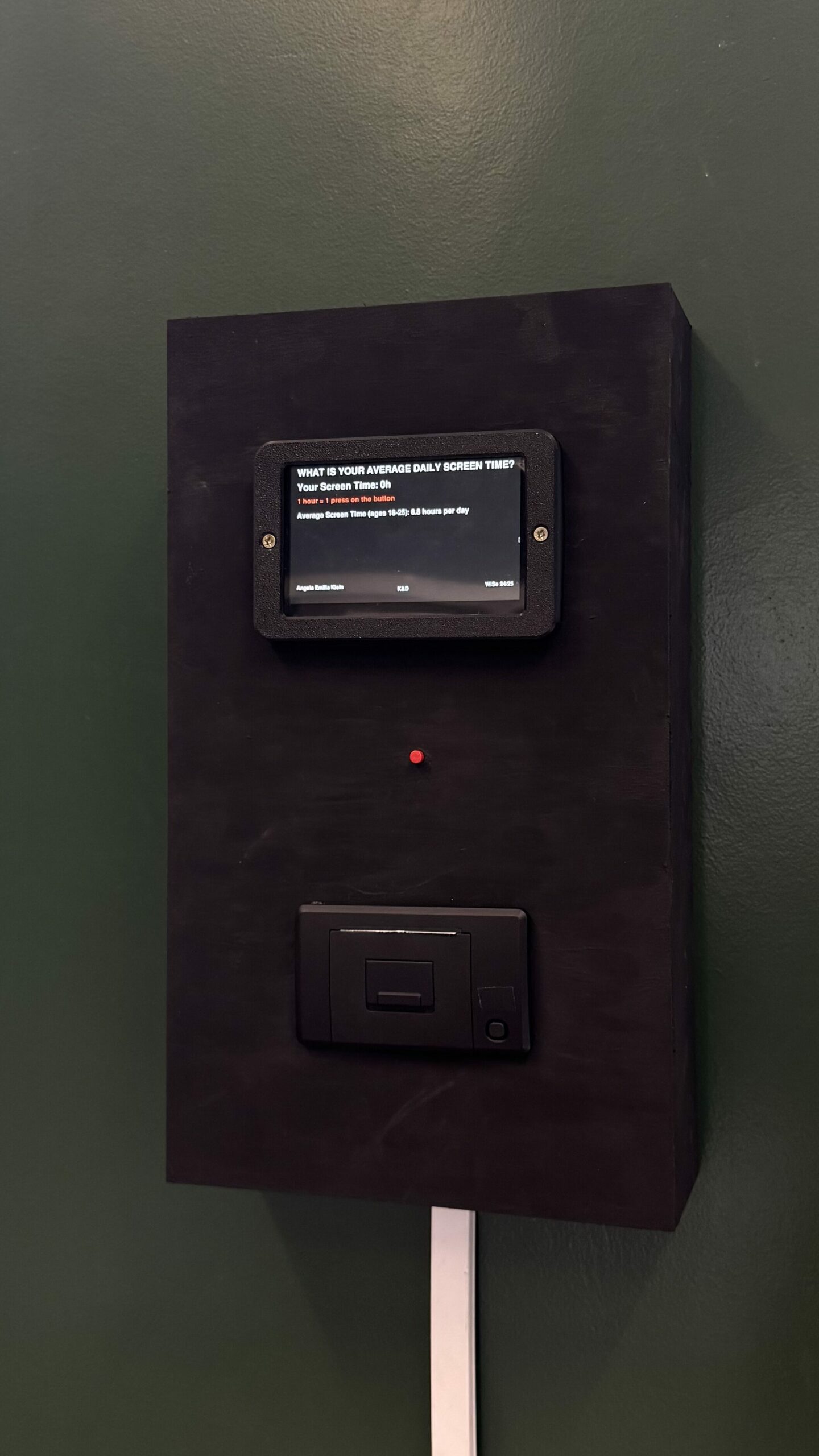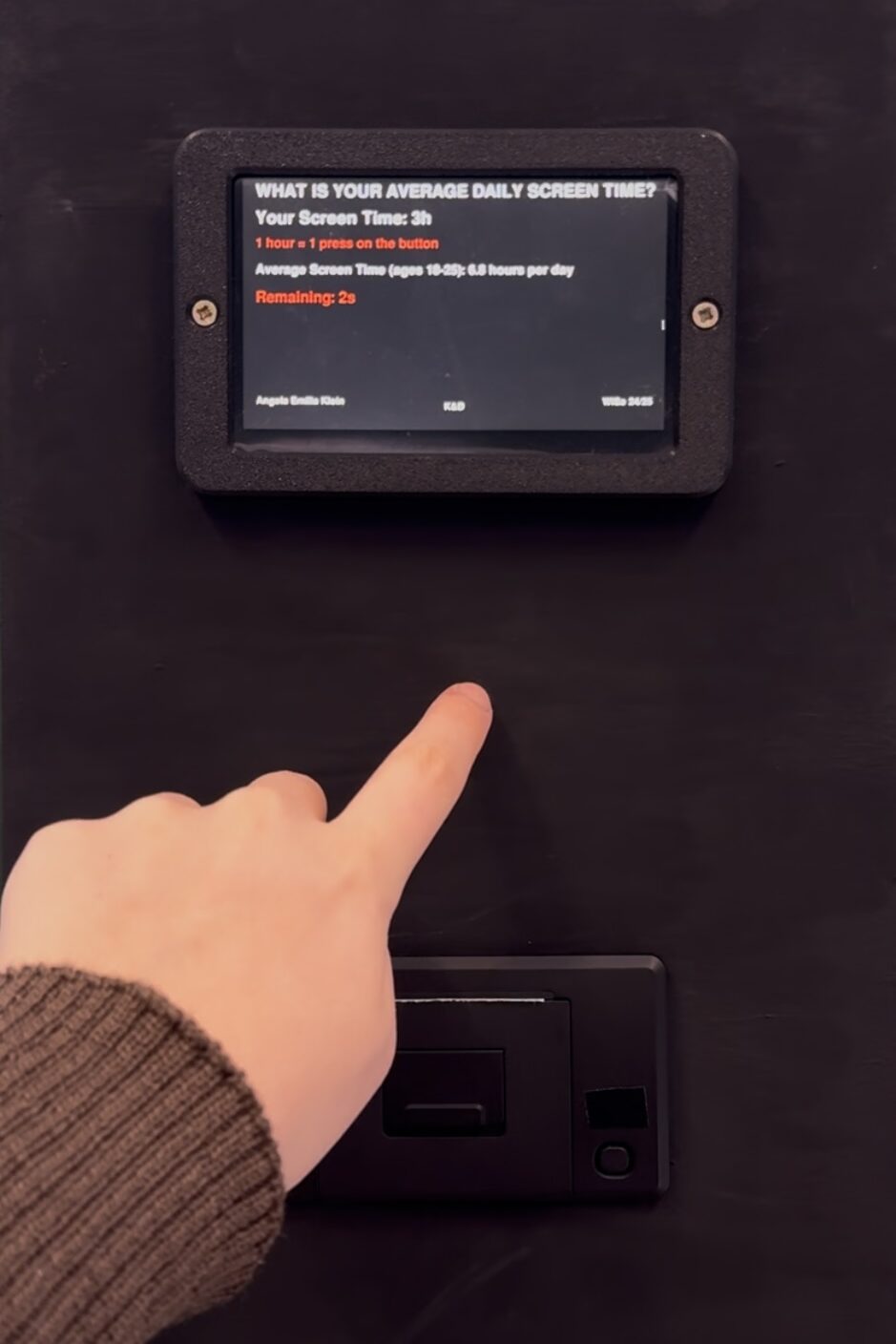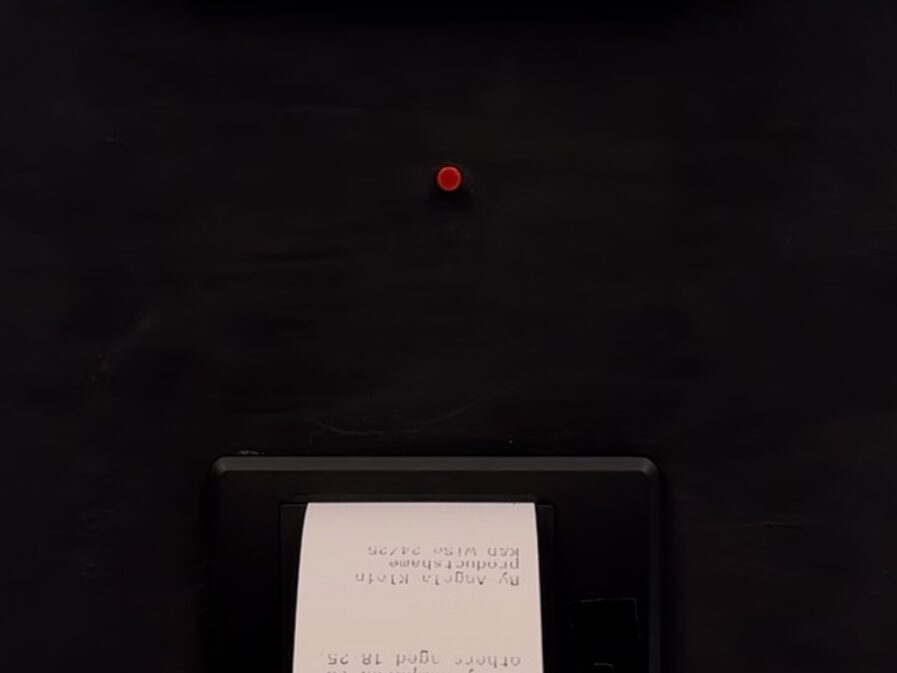
Scroll Toll
scroll toll addresses shame and awareness in relation to digital consumption by visualizing and analyzing personal data. The project transforms screen time into a tangible experience, allowing users to confront their habits in a direct and quantifiable way.
At the core of scroll toll is an interactive kiosk that resembles a self-order system, a familiar interface often associated with efficiency, tracking, and automation. Users input their average daily screen time, and the system generates a receipt that translates this data into different time units—days, weeks, months, and years. To provide context, the receipt also compares the entered value to the average screen time of 18- to 25-year-olds. This comparison invites reflection on how individual digital habits align with broader trends and whether this knowledge evokes a sense of normalcy, guilt, or even relief.
The installation operates at the intersection of personal accountability and systemic critique. While it presents individual screen time as a dataset for reflection, it also raises questions about how digital engagement is designed, encouraged, and monetized. The act of printing a receipt—a mundane, commercial gesture—draws a parallel between digital consumption and physical transactions, highlighting the ways in which personal attention is measured and commodified. Unlike wellness apps that keep such insights within the digital realm, scroll toll externalizes this data, making it physically present and difficult to ignore.
Shame plays a central role in the experience of scroll toll. The project does not dictate what
constitutes “excessive” screen use but instead asks users to interpret the data for themselves. For some, the visualization may provoke feelings of discomfort or self-judgment, while others may experience reassurance in seeing their behavior contextualized. This tension between individual reflection and societal norms makes scroll toll more than just an awareness tool—it becomes a mirror of our relationship with technology, self-control, and external expectations.
The installation itself is constructed with wood, integrating a Raspberry Pi 4, a 5-inch screen,
and a thermal printer within a compact 40×24 cm frame. The choice of materials reflects a balance between digital and physical elements, reinforcing the contrast between immaterial screentime and its material representation. The thermal printer, typically used for transaction receipts, further emphasizes the theme of quantification and the transactional nature of attention in the digital age.
Ultimately, scroll toll is both a self-exploration tool and a societal critique. It invites users to pause and consider the impact of their digital habits, not through abstract statistics but through an immediate and personal interaction. By making screen time visible and measurable, the project sparks conversations about digital dependency, the pressures of constant connectivity, and the emotional weight of our interactions with technology




